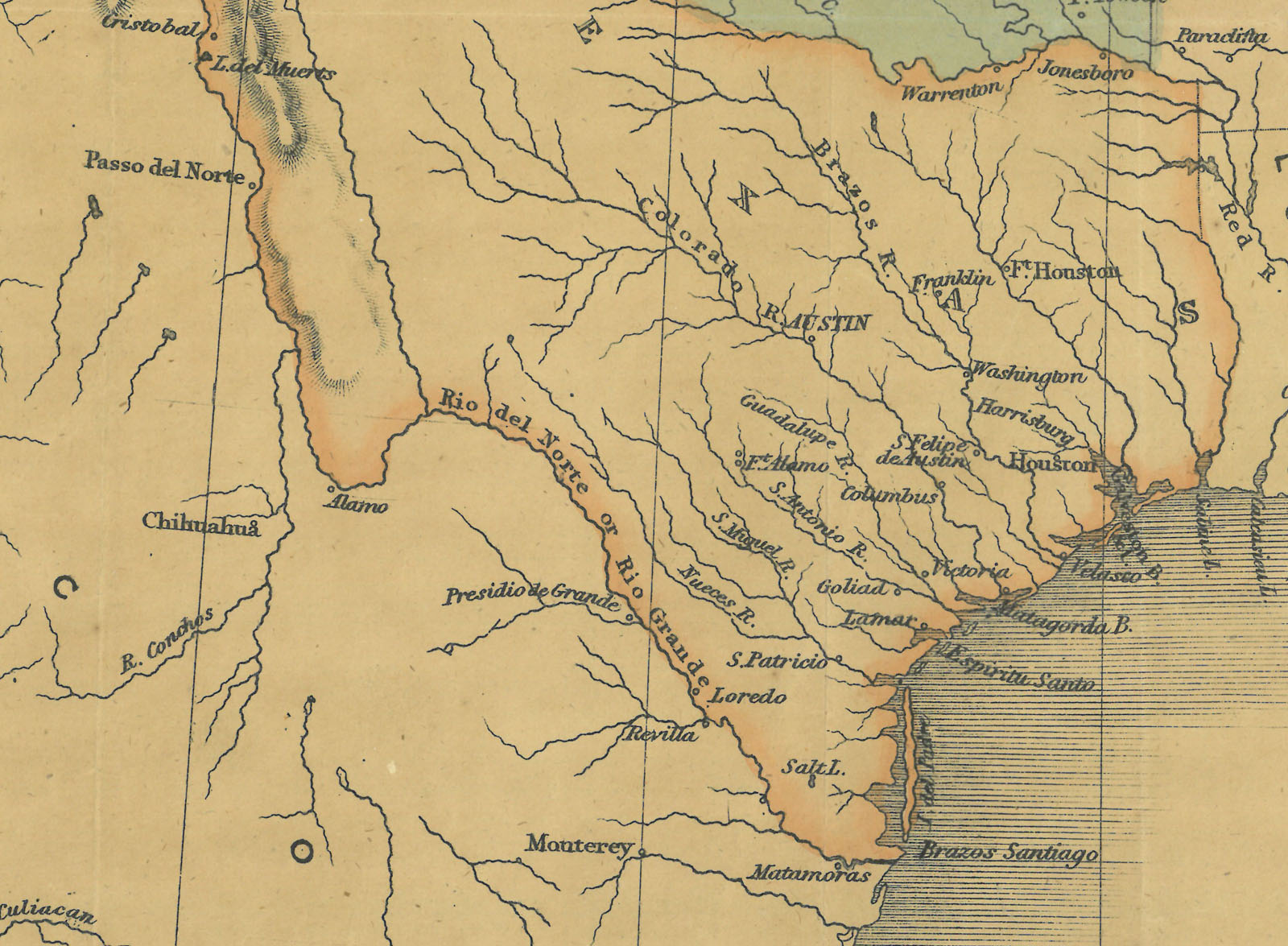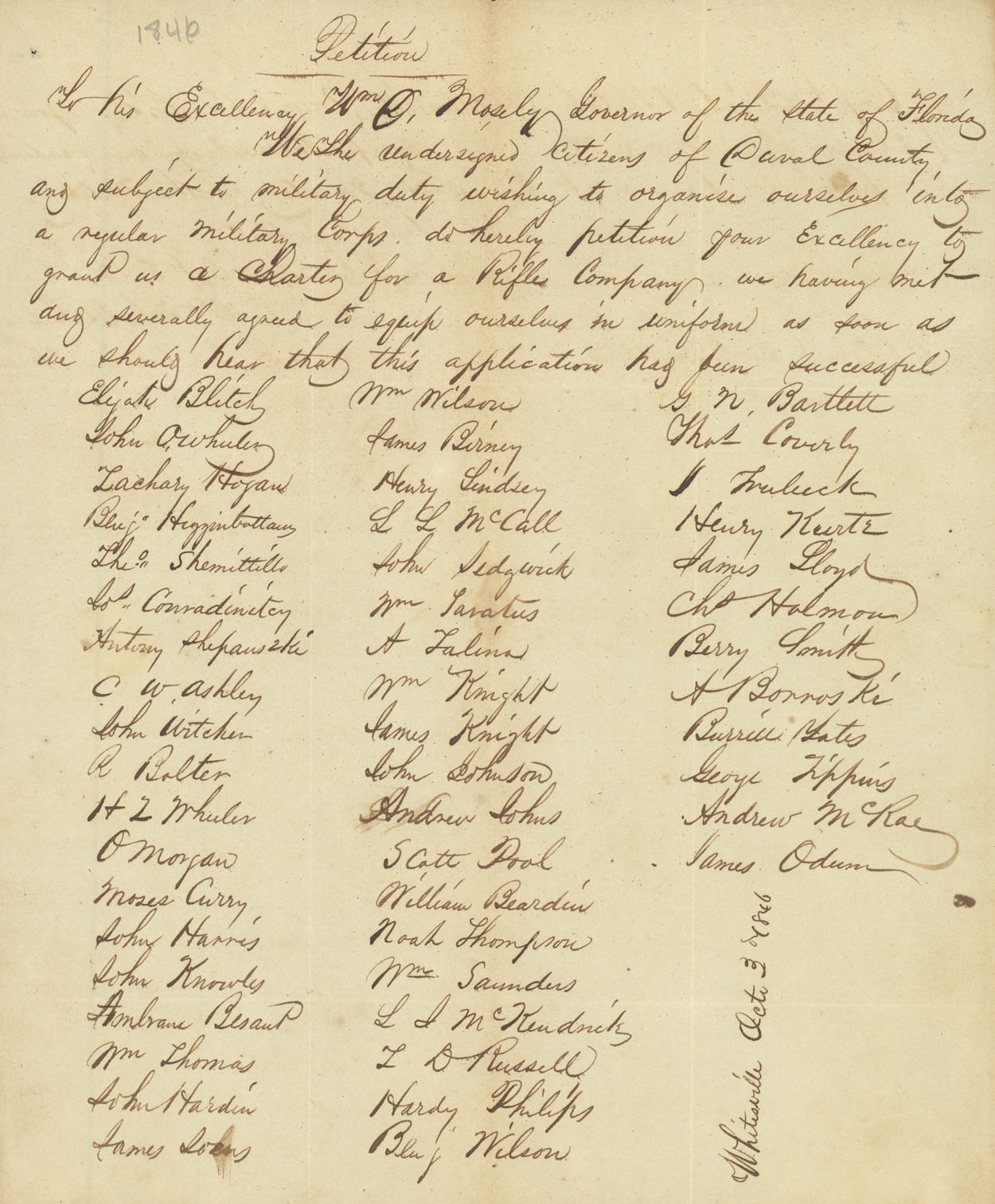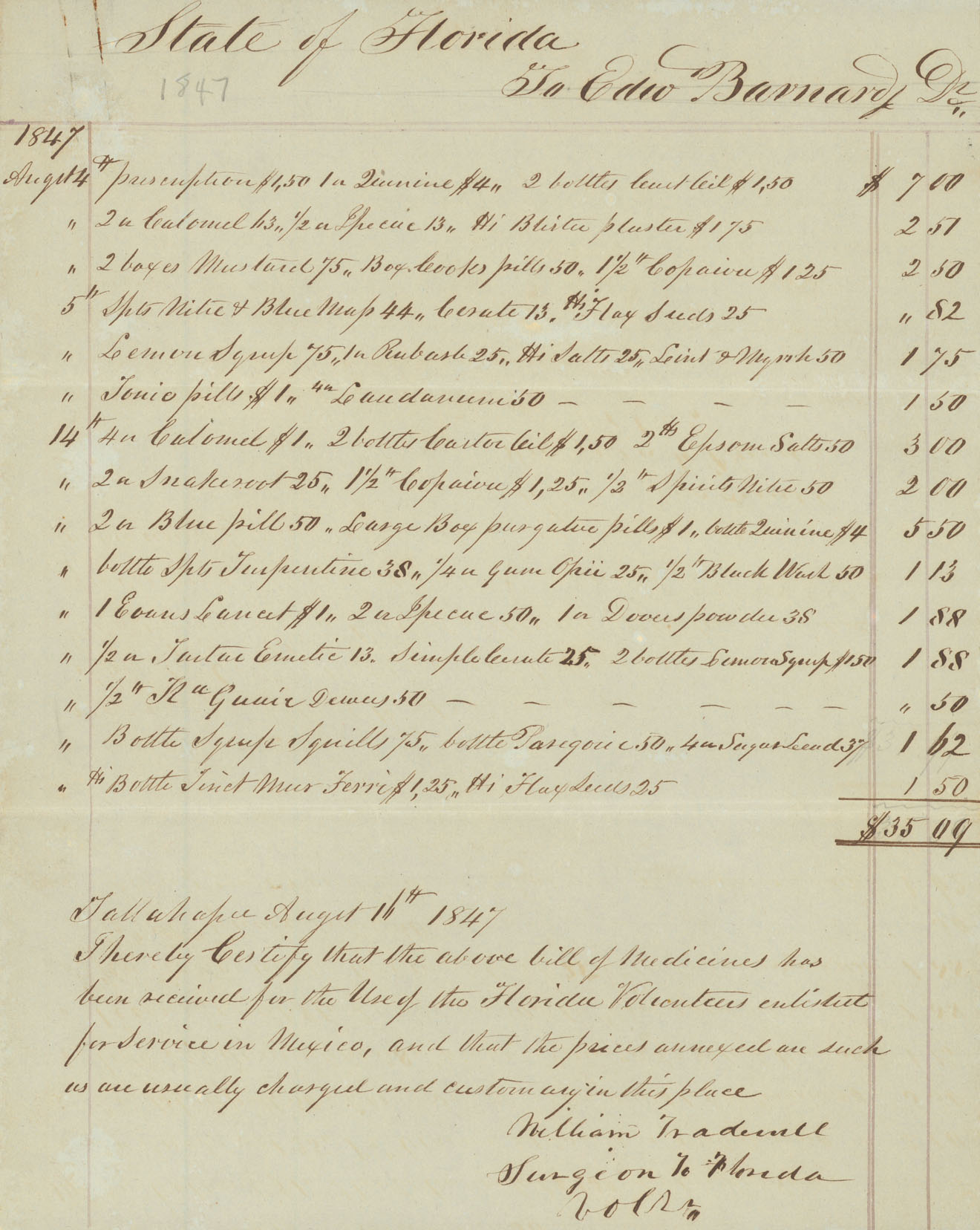Description of previous item
Description of next item
Off the Beaten Path of History
Published August 8, 2015 by Florida Memory
One of the most exciting aspects of archival research is stumbling upon records and events you didn’t know existed. Did you know, for example, that Florida sent several companies of soldiers to fight in the U.S.-Mexican War of 1846-48?
The war was short-lived and Florida’s role was small, which accounts for why the episode is so seldom mentioned in histories of the state. Floridians did serve in this conflict, however, and the State Library & Archives have several excellent resources for learning more about their participation.
The chain of events leading to the U.S.-Mexican War began with the United States’ annexation of Texas as the 28th state in 1845. Mexico considered Texas part of its territory, even though its military had retreated across the Rio Grande following the Texas Revolution of 1835-36. Mexican commander Antonio Lopez de Santa Ana had even signed a treaty agreeing to Texas’ independence from Mexico.

This excerpt of an 1845 map of the United States shows the disputed region of Texas between the Nueces and Rio Grande rivers. The mapmaker chose to show the Rio Grande as the southern boundary of Texas. Florida Map Collection, State Library of Florida. Click the image to enlarge it.
Mexico was experiencing internal troubles and did not immediately attempt to retake Texas after Santa Ana’s retreat. The sticking point was the exact location of the border between the two entities. The Texans claimed their territory ran as far south as the Rio Grande, since that was how far Santa Ana had agreed to retreat after the Texas Revolution. Mexico, on the other hand, claimed the border was supposed to be at the Nueces River, about 150 miles north of the Rio Grande. When the United States annexed Texas as a state in 1845, President James K. Polk claimed the Rio Grande as the true boundary. Polk sent a diplomatic mission to Mexico City to attempt to buy the disputed territory, but this strategy failed. Both the U.S. and Mexico began moving soldiers into the disputed area between the Nueces and the Rio Grande, and after a series of skirmishes in early and mid-1846 the two sides declared war.
Meanwhile, across the Gulf of Mexico, Florida had just emerged from a conflict of its own, the Second Seminole War. It had also entered the Union as a state in 1845. News of the growing troubles on the Mexican border evoked a mixture of caution and enthusiasm among Floridians. Citizens in coastal communities like Pensacola and Apalachicola feared the Mexican government might call on privateers to interfere with American ships in the Gulf of Mexico. Pensacola’s citizens held a public meeting on May 4, 1846 and resolved to form a company of volunteers from Escambia and Santa Rosa counties to march to Texas and fight. Duval County citizens petitioned Governor William D. Moseley to enlist their services for a company, even offering to purchase their own uniforms.

A petition to Governor William Dunn Moseley from citizens of Duval County asking to be chartered as a militia company (1846), in Box 4, folder 10, Territorial and Early Statehood Papers of Florida (Series 2153), State Archives of Florida. Click the image to enlarge it.
Shortly after the war began in earnest, President James K. Polk called on Governor Moseley to raise five companies of volunteers to fight in the war. Ultimately, only three actually went to Mexico, but many more remained in Florida to protect the coastline and maintain a state of readiness in case they should be needed.
Documentation for these activities is meager but easily available at the State Library & Archives. Governor Moseley’s correspondence (Series 679) and the Territorial and Early Statehood Papers of Florida (Series 2153) contain documents illustrating local enthusiasm for volunteering to fight, concerns about the safety of the coastline, and the logistical headaches of fielding a state militia in the 1840s.
One particularly notable document describes the kinds of medicines that were sent to the Florida troops in Mexico. Quinine, calomel, mustard, lemon syrup, castor oil, snakeroot, turpentine, tartar emetic, paregoric, and flax seeds are among the medicines Surgeon William Tradewell reports receiving on this list.

A list of medicines drawn up by Army Surgeon William Tradewell (1847), in Box 2, folder 63, Territorial and Early Statehood Papers of Florida (Series 2153), State Archives of Florida. Click the image to enlarge it.
To explore deeper into mid-19th century medicine, check out the Journal of Dr. John M.W. Davidson and our exhibit on Early Florida Medicine.
Documents from the U.S.-Mexican War also present an opportunity for genealogists. Generally, when a militia company formed, one of its first tasks was to create a muster roll identifying its members. These lists were vital for determining how much the unit would need in terms of supplies, arms, and pay. The roll was also often sent to the state government as part of a request for the company to be officially activated.
The State Archives holds muster rolls for the three Florida companies that served in Mexico, plus two more that served at Fort Brooke near Tampa. These rolls (found in Series 1282) list each soldier’s name, rank, age, time and place of enlistment, and other details. These documents can potentially help pinpoint the location of a Florida ancestor whose whereabouts in the 1840s have been otherwise tricky to find, if in fact he volunteered for service in this conflict.
This is just one example of the many nooks and crannies in Florida’s history that deserve more attention than they often receive. Are there interesting but obscure historical episodes associated with your Florida community? Get a conversation started about them either by sharing this article on Facebook!
Cite This Article
Chicago Manual of Style
(17th Edition)Florida Memory. "Off the Beaten Path of History." Floridiana, 2015. https://www.floridamemory.com/items/show/297537.
MLA
(9th Edition)Florida Memory. "Off the Beaten Path of History." Floridiana, 2015, https://www.floridamemory.com/items/show/297537. Accessed December 15, 2025.
APA
(7th Edition)Florida Memory. (2015, August 8). Off the Beaten Path of History. Floridiana. Retrieved from https://www.floridamemory.com/items/show/297537

 Listen: The Assorted Selections Program
Listen: The Assorted Selections Program